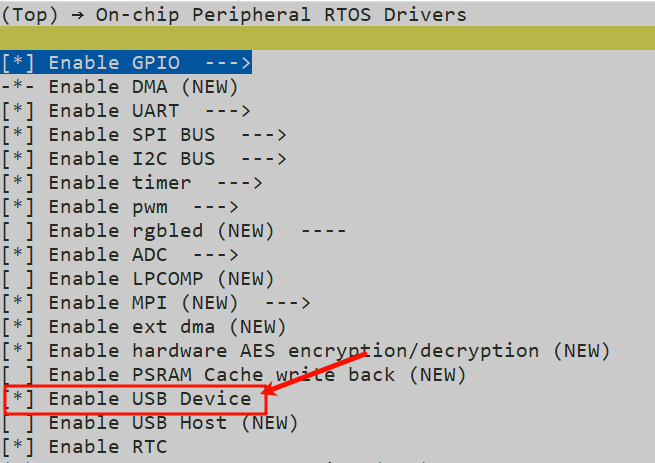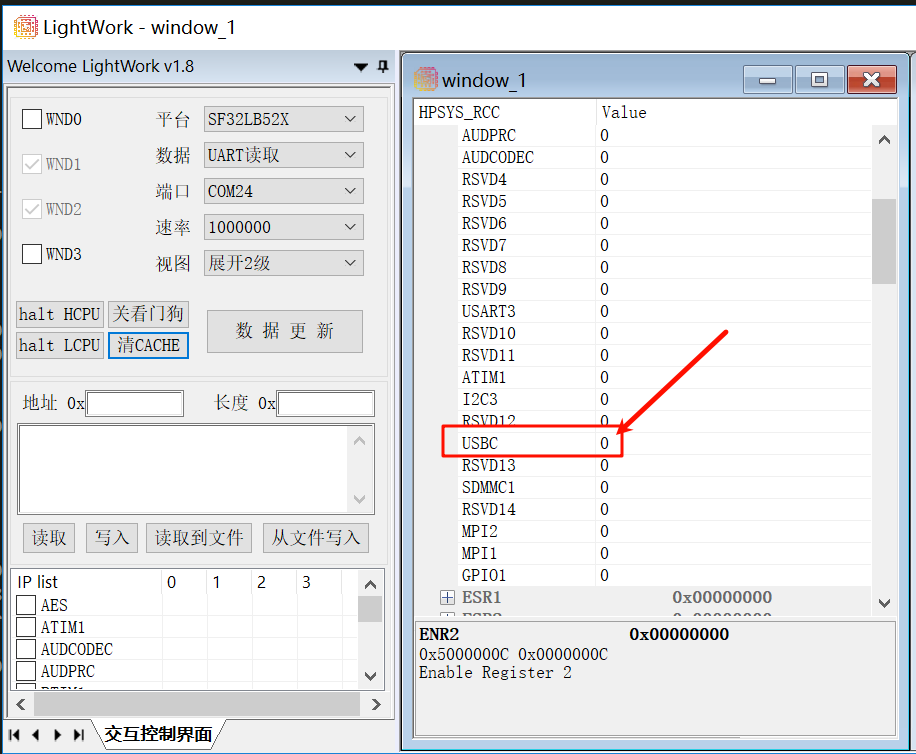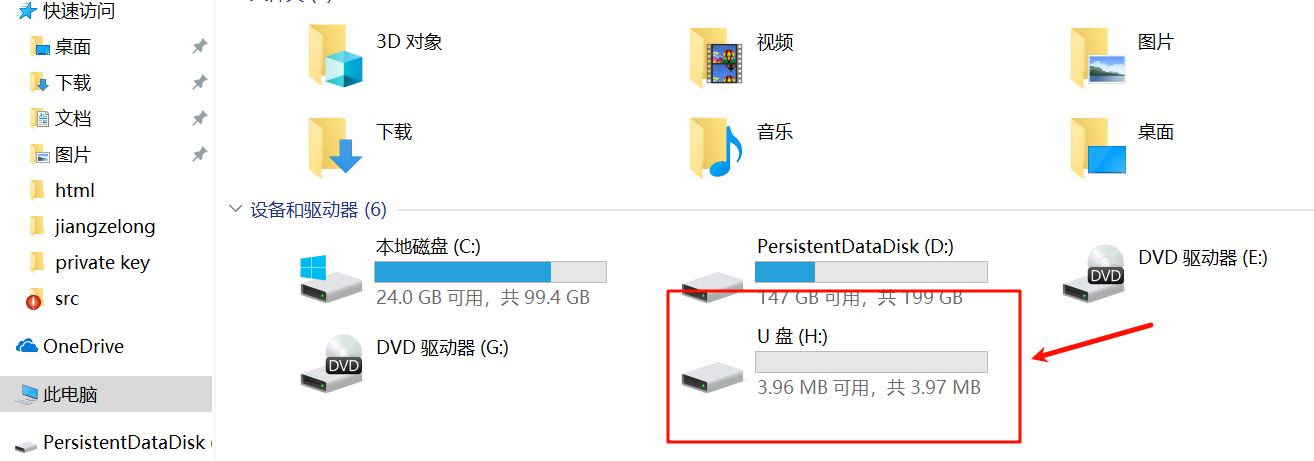USB_MSTORAGE Example
Overview
The example demonstrates USB as a device functioning as a USB flash drive, which can mount local file system on PC.
Supported Development Boards
The example can run on the following development boards:
sf32lb52-lcd_n16r8
Note: Generally, examples run on the chip’s HCPU. “eh-lb563_v2” is equivalent to “eh-lb563_v2_hcpu”. If you want to run the example on LCPU, you can use “eh-lb563_v2_lcpu”. Currently USB functionality temporarily only supports running on HCPU.
Example Directory Structure
USB_MSTORAGE project contains 1 .c file (main.c). The tree structure below shows other files in the project directory.
|--Readme.md
|--src
| |--main.c
| |--Sconscript
|--project
|--Kconfig
|--Kconfig.proj
|--proj.conf
|--rtconfig.py
|--SConscript
|--SConstruct
Example Usage
Hardware Requirements
To run the example, you need to have a development board that supports this example.
A USB data cable capable of data transmission.
HDK52X V1.2 version hardware needs the following changes: | R0105 | R0710 | R0706 | |——-|——-|——-| | NF | NF | NF |
HDK56X V1.1 version hardware needs the following changes: | R0210 | R0211 | R0202 | R0204 | R0634 | R0633 | R0132 | R0107 | R0103 | R0106 | |——-|——-|——-|——-|——-|——-|——-|——-|——-|——-| | NF | NF | NF | NF | NF | NF | NF | NF | 220K | 390K |
Pin Configuration
Note: The table below shows pin configurations for VBUS control on each development board.
In HDK52X V1.2 version, USB insertion/removal pin uses NTC function pin multiplexing.
In HDK56X V1.1 version, USB DP and DM pins are multiplexed with UART1, so you need to change LOG print uart1 to uart4 and disable uart1. | | vbus pin | DP | DM | |—————|————-|——|——| |eh-lb523 | PA32 | PA35 | PA36 | |eh-lb520 | PA32 | PA35 | PA36 | |eh-lb525 | PA32 | PA35 | PA36 | |eh-lb561 | PA51 | PA17 | PA18 | |eh-lb563 | PAXX | PA17 | PA18 |
Compilation and Programming
Follow these steps to complete compilation and programming.
scons --board=sf32lb52-lcd_n16r8
.\build_sf32lb52-lcd_n16r8_hcpu\uart_download.bat
Example Output Results Display
The following results show the log after the example runs on the development board. If you cannot see these logs, it means the example did not run successfully as expected and requires troubleshooting. System startup
mount fs on flash to root success
usb_init
Use help to check USB mstorage file system command!
msh />usb_thread_entry
Log when USB is inserted and USB flash drive device is detected

Troubleshooting
If expected log does not appear, troubleshooting can be done from the following aspects:
Whether hardware connection is normal
Whether pin configuration is correct
Check if USB interface is loose
Check if USB cable has data transmission capability
Check if USB clock is 60MHz frequency
Example Extension
If you want to modify VBUS detection pin number, you can modify as follows:
Modify configuration menuconfig –board=eh-lb525 and re-modify the parameter in “usb Insertion detection PIN” to the desired detection pin D:\MyWork\code_sdk\siflisdk\customer\boards\ec-lb555xxx
Modify pinmux configuration file “\siflisdk\customer\boards\ec-lb corresponding model directory\bsp_pinmux.c”, configure this pin to GPIO mode;
HAL_PIN_Set(PAD_PA32, GPIO_A32, PIN_NOPULL, 1);//USB VBUS
Example Instance sf32lb52-lcd_52d
The following are instance steps for implementing USB flash drive functionality using sf32lb52-lcd_52d
Hardware Requirements
To run the example, you need to have a development board that supports this example.
Two USB data cables capable of data transmission.
Insert two data cables into 52d interfaces and connect to PC. If PC shows “Unrecognized USB device”, it may be due to:
USB Device not enabled
Hardware device not connected correctly
USB interface is loose
Connected data cable is damaged and cannot perform data transmission
Here are some solutions:
Enter menu page through menuconfig –board=sf32lb52-lcd_52d command, enable Enable USB Device, then check register data for self-diagnosis


Replace with a normally functioning data cable
When USB insertion can be recognized normally, you can proceed with file writing and programming
Compilation and Programming
Execute the following commands to complete compilation and programming for -emlb52d.
scons --board=sf32lb52-lcd_52d -j8
build_sf32lb52-lcd_52d_hcpu\uart_download.bat
Example Instance -emlb587
The following are instance steps for implementing USB flash drive functionality using -emlb587
Hardware Requirements
To run the example, you need to have a development board that supports this example.
Two USB data cables capable of data transmission.
A j-link for programming
After connecting link with development board and PC, proceed with file compilation and programming
Compilation and Programming
Execute the following commands to complete compilation for -emlb587.
scons --board=sf32lb58-lcd_n16r64n4 -j8
After compilation, open J-LINK connection tool, execute connect command to connect. If connection fails, check if serial port is occupied or other issues. After successful J-LINK connection, proceed with file programming
Execute the following commands to complete programming for -emlb587.
build_sf32lb58-lcd_n16r64n4_hcpu\download.bat
Example Implementation Effect
USB flash drive device appears in PC device list




